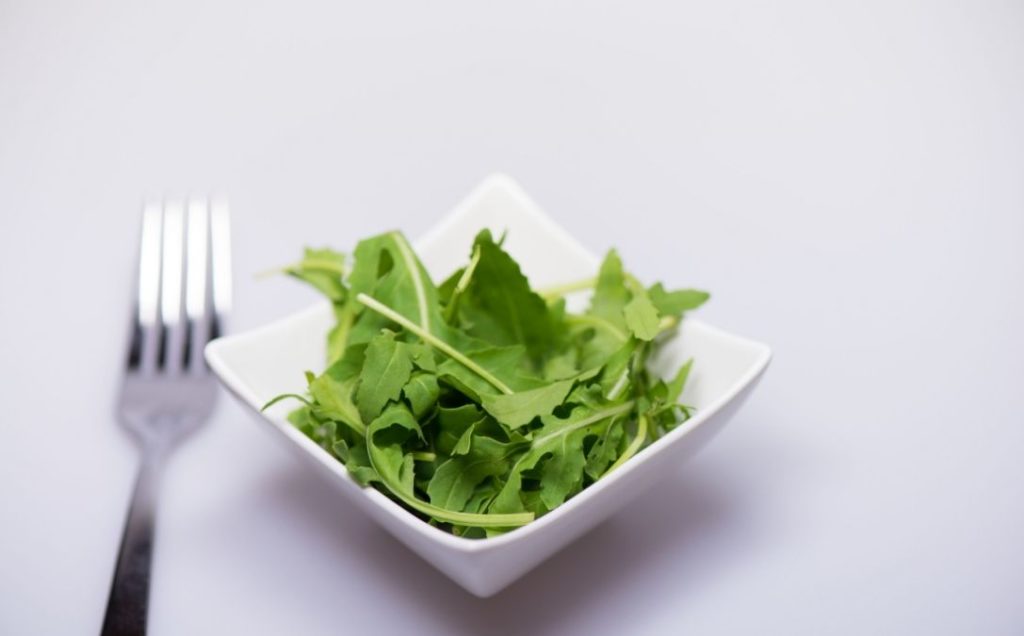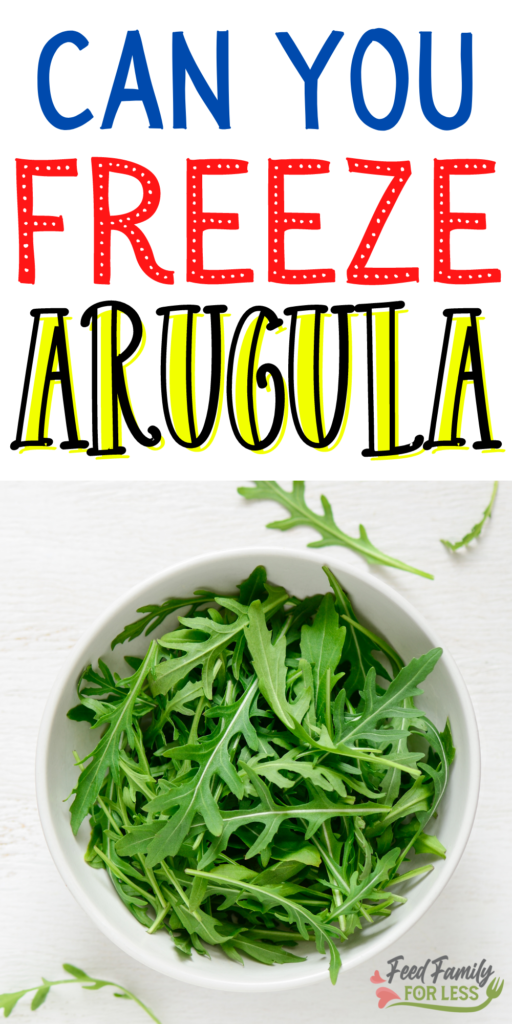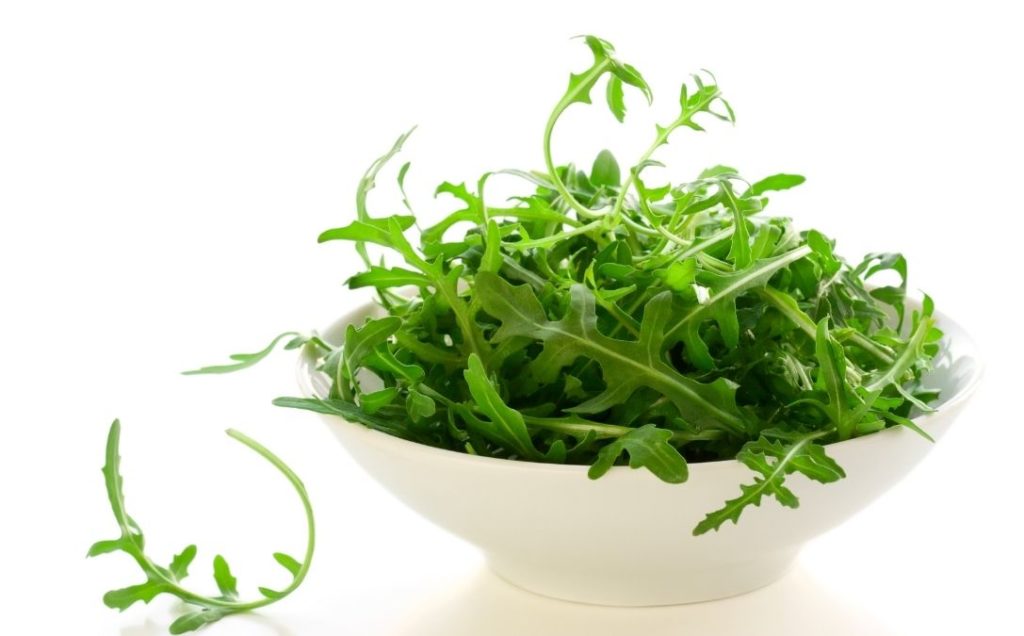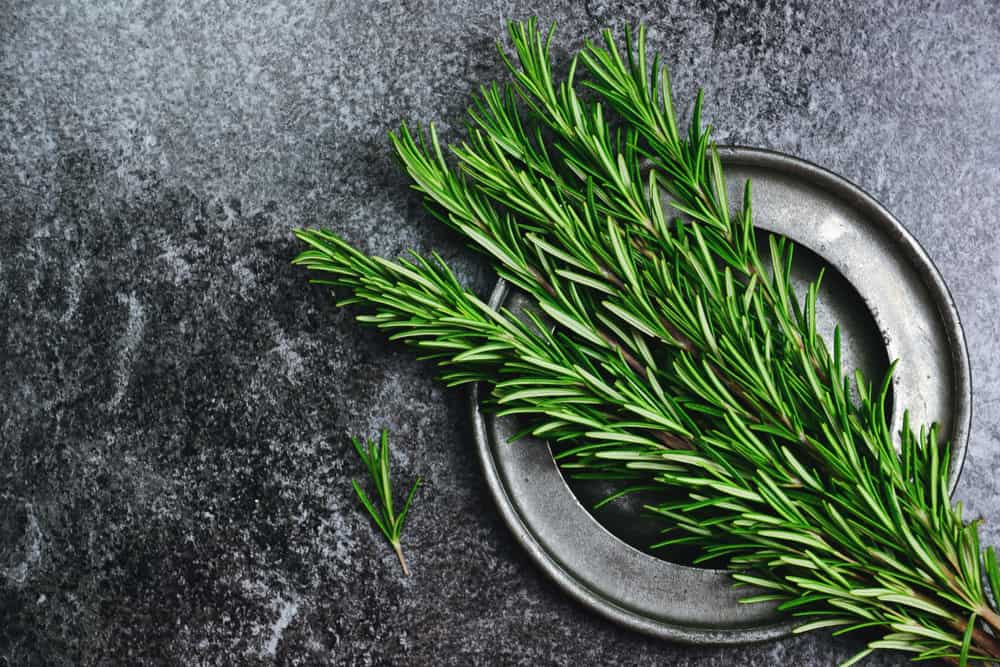Can you freeze arugula? Are you taking advantage of the fresh vegetables in season? Are you wondering if arugula and spinach are similar vegetables?
Are you looking to prepare family-pleasers using your stock of arugula? If so, what recipes do you have in mind?
This article will walk you through everything you need to know about arugula, practical tips for freezing arugula, and the health benefit of arugula.
This post may contain affiliate links. Read my disclosure policy here.
Can You Freeze Arugula?
Yes, you can freeze arugula; however, the process is not as simple as it is with other vegetables. Unlike spinach, all you have to do is blanch the leaves and toss them in airtight bags; there’s more to freezing arugula.
First, you need to wash the leaves, removing all the damaged pieces. Next, you perform blanching, wherein you immerse the arugula into boiling water for at least two minutes.
Cool them immediately in icy water, and make sure they are dehydrated before you can store them in freezer bags. Most importantly, the freezing bags should be air-free to prevent freezer burn.
What is Arugula?
Arugula, also known as garden rocket, is an edible herb in the brassica family, plus it’s a type of cruciferous vegetables like broccoli, cabbage, cauliflower, and collard greens. Arugula originated from the Mediterranean, and ever since, it has been used as a staple green in Italian and French cuisine. Currently, arugula is popular in the United States and is used as salad greens in most households.

How to Freeze and Preserve Arugula
Because freezing arugula is not recommended, it’s best consumed immediately after its harvest to utilize the nutritional value and flavor that comes with its freshness. However, if you intend to keep it longer, you need to consider its flavor since that’s one of the primary elements that set it apart from other vegetables.
Regardless of the method you use to store your arugula, it helps to consume it sooner than later. If you’re skeptical about keeping arugula, consider the tips below for efficiency.
1. Start by Washing It
You must wash all leafy vegetables, including arugula, whether you plan to use them instantly or later. Washing is a critical process as it helps remove any bacteria present on the surfaces of the leaves. It also prevents the occurrence of brown spots, which show up when stored uncleaned.
To protect your arugula, even more, consider adding vinegar solution while washing. Then, rinse the arugula in water containing a few drops of vinegar. Let dry before storing for complete effectiveness.
2. In the Refrigerator
The best way to store fresh arugula is through refrigeration. You don’t want the leaves to be too cold, neither do you want them to be too moist. But how the heck is this even possible?
Simply keep your fresh arugula in a resealable plastic bag. But before then, consider adding damp paper towels to provide moisture. Remember, you don’t want your arugula too moist, so the paper towels can come in handy to soak up excess moisture.
For efficiency, cover your arugula with paper towels and put them in the freezer bags. This way, your arugula leaves will maintain their freshness for up to five days. You can also add some holes in the plastic bag to prevent condensation.
3. Freeze It
Effective freezing of arugula can be a daunting task. As with other greens, all you need to do is blanch and store in freezer bags. You may take the same approach with arugula, but the outcome won’t be ideal. It’s also worth noting that frozen arugula that has undergone thawing tastes differently from fresh herbs.
To retain its original flavor, dip your arugula leaves in olive oil before freezing. Once it’s frozen, remove it from the freezer and cut it into smaller pieces. You may then keep the pieces in freezer bags and store them for as long as you want.
Frozen arugula can serve the same purpose as fresh arugula. You can serve them along with raw salads; however, it goes well with cooked dishes, such as pizza and pasta. If you stored your arugula in bunches, place it upright in a glass jar and cover it with a plastic bag to prevent it from drying out. If you don’t have a refrigerator, this method might be your cup of tea.
4. Make a Pesto
This is an excellent alternative to freezing arugula in olive oil. It’s recommended to use half the amount of oil that the recipe needs for freezing. You can use the remaining half to defrost your pesto. With this method, you can be guaranteed to retain the original flavor of your frozen arugula.
What Does Arugula Taste Like?
Freshly obtained arugulas have a unique peppery flavor to spice up your salads, sauces, pasta, and sandwiches. Depending on its maturity, the flavor can vary from peppery, tart to slightly bitter. In most cases, baby arugulas are a bit delicate and mild, while mature arugulas are spicier.
You’ll also notice a similar taste with arugula seeds. If you find your arugula too spicy, consider mixing it with various greens like baby spinach, baby romaine, tatsoi, and mizuna.

Health Benefits of Arugula
Arugula is rich in nutrients, including calcium, potassium, folate, vitamin A, B, C, K. Additionally, arugula contains small amounts of sugar, fats, calories, and carbohydrates, making it a better option for weight control.
What’s more, these leafy vegetables are packed with antioxidants and beta-carotene to boost your immune system and promote healthy eyes and bones. Incorporating more of these veggies into your meal plan will go a long way to promote weight loss.
Are Arugula and Spinach the Same Thing?
Arugula and spinach aren’t the same things, even though they are both used in culinary applications. Arugula has elongated leaves with ridges, while spinach has wide, oval-shaped leaves.
Another notable difference comes with flavor. Spinach has a mild, vegetal flavor, while arugula is peppery. When cooking these two, you’ll notice that spinach thickens compared to arugula. This means that spinach can withstand high heating. That said, arugula is best consumed raw or wilted.
Arugula Recipe Ideas
Arugula blends well with salads containing mild lettuce to enhance flavor and texture. You can also use these leafy greens to neutralize punchy salads and acidic dressings.
This leafy green is an excellent addition to cooked foods, so you can trade in arugula for recipes that require spinach. Below are a few examples of arugula recipes you can try:
- Arugula Salad with Parmesan: A combination of arugula salad with Parmesan makes the best Italian dish. Peppery arugula blends well with extra virgin oil, fresh lemon extract, black pepper, and nutty shavings of Parmesan. The arugula salad is a great side dish for steak or grilled chicken.
- Pesto: This is a flavorful replacement for basil pesto and is an excellent choice for people with a reserve of vegetables.
- Pizza topping: Arugula is best when eaten raw, and as such, it makes an excellent topping for pizza. You can add it a few seconds before taking it out from the oven or immediately after baking. These peppery herbs go well with prosciutto or fresh heirloom tomatoes.
- Rucolino: This peppery digestive alcohol incorporates arugula as the main ingredient and makes a perfect dessert.

Where Can I Buy Arugula?
You can find arugula either in supermarkets or local markets, and they are available in bunches and loose leaves. Bunched arugula larger leaves than loose-leaf arugula.
Bagged arugula is sold in supermarkets throughout the year, with bunches and loose-leaf appearing more in the early spring. Wild and small arugula show up in these seasons, too.
When buying arugula, opt for those with bright green color, avoiding the damaged ones. You also don’t want these leafy greens excessively moist.
However, if you’re planting at home, make sure they are growing in direct sunlight during cold weather. Baby arugula leaves should be ready in a few weeks, with mature leaves harvested within a month.
Frequently Asked Questions
1. Can You Freeze Arugula Without Blanching?
Yes, you can freeze arugula without blanching. However, it’s best not to skip this process to retain the green color. But if you must store your arugula without blanching them first, ensure to pre-freeze adequately before the actual freezing.
2. Does Arugula Regrow After Cutting?
Yes, arugula grows back after cutting. Its seeds produce a stem, which leaves grow out from. Cutting them back will ensure your arugula plant grows even further. Do this once or twice to prevent them from becoming too spicy or bitter.
3. How Do You Keep Arugula From Going Bad?
Carefully wrap your arugula using damp paper towels and place them in freezer bags. Make sure it’s completely sealed to prevent it from drying out. Alternatively, you could keep your arugula in reusable containers with lids. Again, use paper towels to line the bottom and sides of your storage containers.
4. How Do You Know If Arugula Has Gone Bad?
You can quickly tell if arugula has gone bad just by the appearance. More often, the leaves will lose their bright green color and become excessively moist. If you’re still skeptical about it, it’s time you make good use of your nostril. Spoilt arugula produces an unpleasant smell, and the peppery taste turns sour.
5. How Long Does Bagged Arugula Last?
Bagged arugula lasts up to three days; however, you can enhance its shelf life by refrigerating in airtight plastic containers. Meanwhile, do not wash the arugula leaves until they are ready for consumption.
6. Is Too Much Arugula Bad For You?
There’s little to no information that suggests excessive arugula is harmful to your health. But those taking blood thinners are prohibited from arugulas as they undo their effects. This is because arugula is rich in vitamin K, which is responsible for the blood clotting process.
Bottom Line
Each vegetable adds a unique flavor to your meals. Similarly, arugula leaves are great meal-pleasures and can be used with almost all types of foods to enhance flavor.
If you haven’t used these leafy greens before, then it’s high time you give it a try. Honestly, you wouldn’t want to miss out on its benefits and the distinctive peppery flavor that comes with it.







